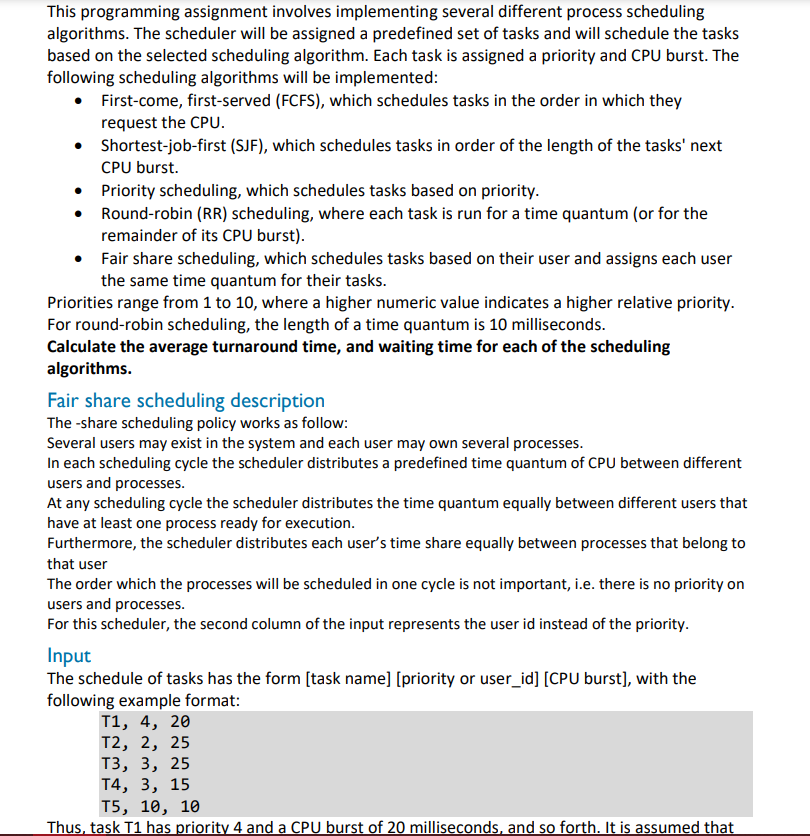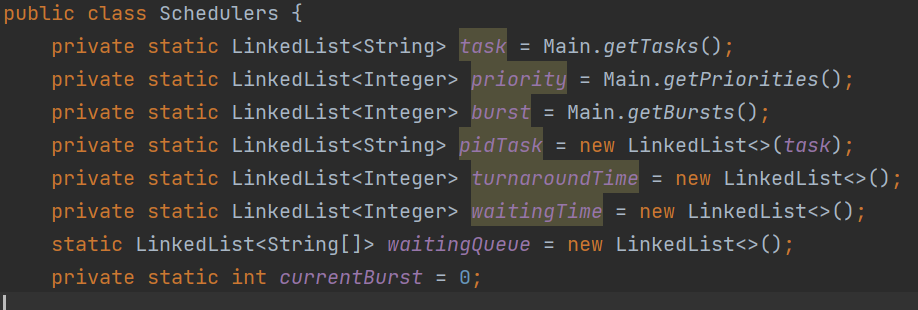Please use Java and LinkedList, will upvote, please answer asap. Only shortest job first (SJF) and Fair share scheduling.
Class scheduler is already made. Main and class are seperate. Please help with the code using the following initialization.


This programming assignment involves implementing several different process scheduling algorithms. The scheduler will be assigned a predefined set of tasks and will schedule the tasks based on the selected scheduling algorithm. Each task is assigned a priority and CPU burst. The following scheduling algorithms will be implemented: - First-come, first-served (FCFS), which schedules tasks in the order in which they request the CPU. - Shortest-job-first (SJF), which schedules tasks in order of the length of the tasks' next CPU burst. - Priority scheduling, which schedules tasks based on priority. - Round-robin (RR) scheduling, where each task is run for a time quantum (or for the remainder of its CPU burst). - Fair share scheduling, which schedules tasks based on their user and assigns each user the same time quantum for their tasks. Priorities range from 1 to 10 , where a higher numeric value indicates a higher relative priority. For round-robin scheduling, the length of a time quantum is 10 milliseconds. Calculate the average turnaround time, and waiting time for each of the scheduling algorithms. Fair share scheduling description The -share scheduling policy works as follow: Several users may exist in the system and each user may own several processes. In each scheduling cycle the scheduler distributes a predefined time quantum of CPU between different users and processes. At any scheduling cycle the scheduler distributes the time quantum equally between different users that have at least one process ready for execution. Furthermore, the scheduler distributes each user's time share equally between processes that belong to that user The order which the processes will be scheduled in one cycle is not important, i.e. there is no priority on users and processes. For this scheduler, the second column of the input represents the user id instead of the priority. Input The schedule of tasks has the form [task name] [priority or user_id] [CPU burst], with the following example format: T1,4,20 public class Schedulers \{ private static LinkedList task = Main.getTasks(); private static LinkedList priority = Main.getPriorities(); private static LinkedList burst = Main.getBursts (); private static LinkedList pidTask = new LinkedList ( task ); private static LinkedList turnaroundTime = new LinkedList(); private static LinkedList waitingTime = new LinkedList(); static LinkedList waitingQueve = new LinkedList (); private static int currentBurst =0








